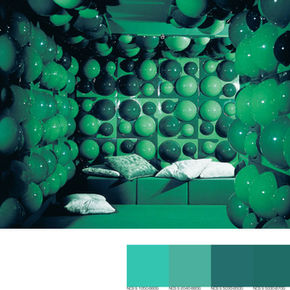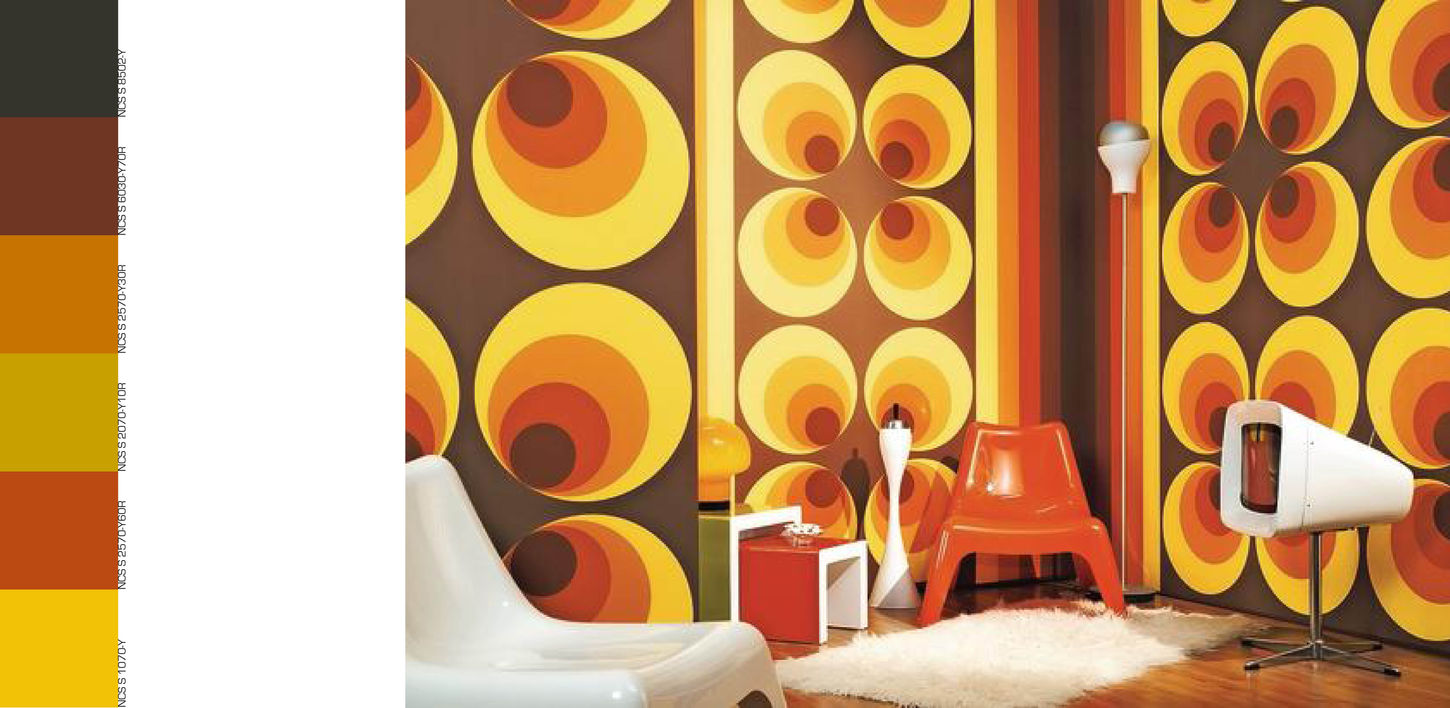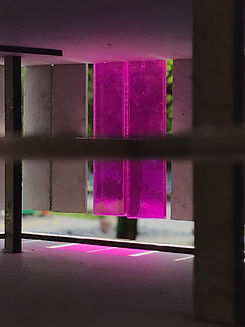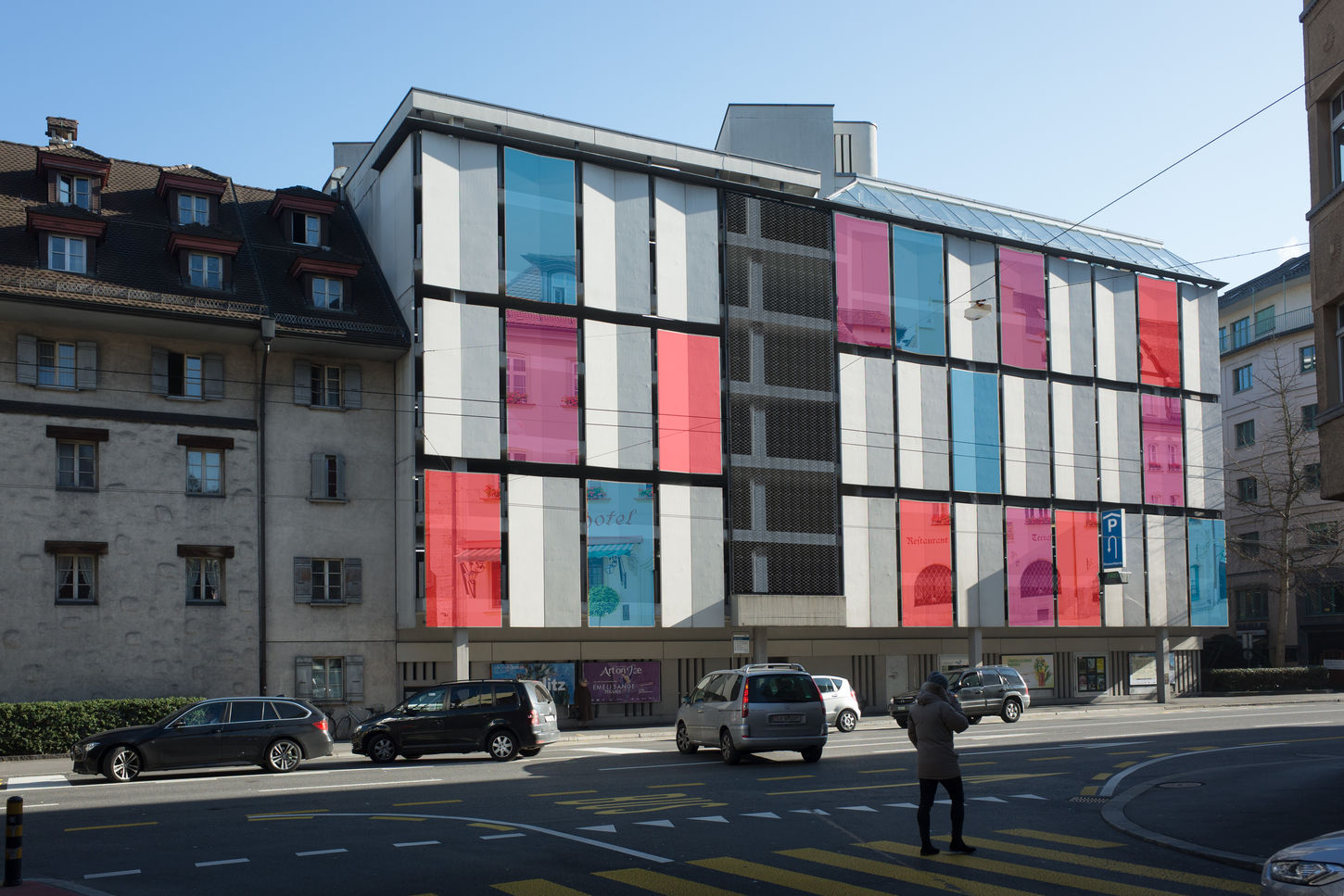
In the fourth semester we did three small projects. The first part is a color fan, which is supposed to be inspired from the 70s. This color fan is used in the second part at the parking garage Kesselturm for upgrading. In the third part, a material samples is made, combining PET and wax.
In collaboration with Anna Zweifel, Filiz Boran, Fabia Schaffer and Lena Zimmermann

70's Colour Fan
As a part of the car park art project, we researched on typical 1970's interior colours to create a colour fan for the later project. The colours are rearranged and combined into different colour schemes, as shown in the documentation. It was a good visual experiment to see what the possibilities are and which colours fit together nicely.












Car Park Kesselturm
In the second task, where we want to upgrade an old parking garage from the 70’s in Lucerne, in Switzerland, the colour fan from the last task is used as a basis. We used the natural sunlight and artificial light to create a light play. During daytime, the colours are shown in the inside and the parking lots shine in different colours. At nighttime, the lights shift to the outside and the building becomes a lantern. The colour scheme is chosen based on the harmony of adjacent colours and the harmony of complementary ones. On the east facade the colour should make the quiet street to livelier and especially an orange colour, which - according to Eva Heller (colour psychologist) - represents energy. The west facade, along the main road should be more calming. Here, we used the colour blue which, as Eva Heller claims, conveys peacefulness.






Material Sample
Another part of the fourth semester focused on experimenting with different materials by mixing two together to create a material sample. Therefore, we used wax and PET-bottles. The one sample with the PET-grid was a test to see how translucent the wax was when the PET was imbedded in the middle. The other ones were aimed to see what happens when you put the PET pieces in the wax at different stages or temperatures. The first row on the right shows the sample into which the PET pieces were put in while the wax was boiling hot. In the row below on the left, the PET was added when the wax was poured in and cooled for one to two minutes. The image on the right of the previous sample shows how the PET was put in after the wax already had started to harden and almost built a small layer on top.







